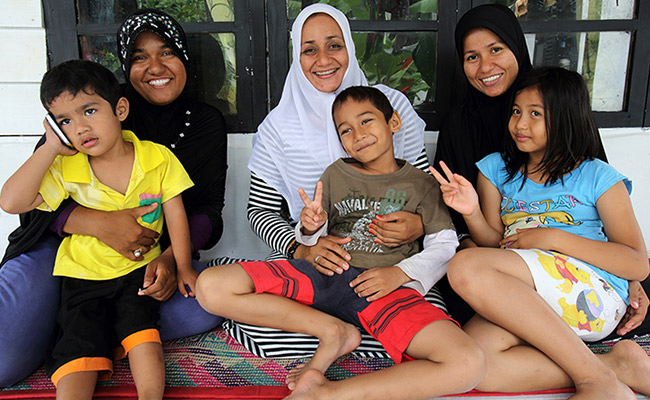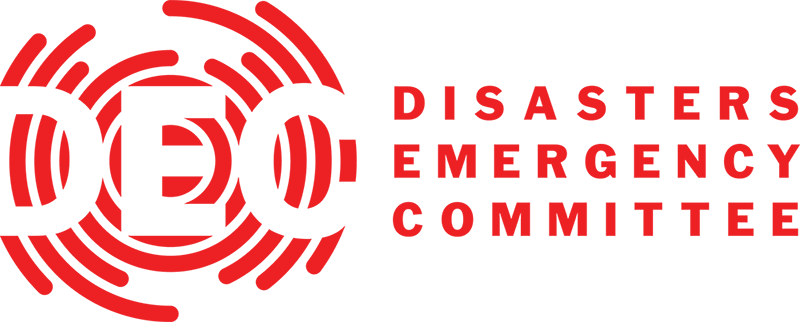
The Tsunami legacy
 Sisters Noni, Nona & Nina (with their children) in front of their rebuilt home which was originally destroyed by the tsunami
Sisters Noni, Nona & Nina (with their children) in front of their rebuilt home which was originally destroyed by the tsunami
Ten years after the Asian Tsunami devastated millions of lives, the UK Public can be proud of the impact their generous donations continue to have on people affected by disasters.
As we remember those who lost their lives and the local communities that first responded, we reflect on what we – humanitarian agencies – have learnt in the decade since.
This week DEC member agencies Oxfam and CARE International have both released new reports on how the Tsunami influenced the changing humanitarian system. Swiss Solidarity (a fellow member of the Emergency Appeals Alliance) also launched a new evaluation of the response earlier this month.
These top ten lessons are thanks to their research:
- Evaluating the needs of survivors quickly is crucial and this means listening to those affected and designing projects with them. We are now much better at sharing analysis and evaluations amongst ourselves. In the Philippines after the 2013 super typhoon, some member agencies worked with local people to design their own shelter kits and feedback mechanisms such as helpdesks are common place.
- Humanitarian agencies are now much more likely to provide people with materials, grants or skills training to help them build their own home rather than build it for them. Shelter kits help people be part of their own recovery and design their own shelters according to their own needs. Some agencies work with affected people to design their own kits, acting as the advisors and advocates for new safe homes. We know that training local people to lead reconstruction and recovery increases the acceptance of the project and allows us to reach more people more quickly.
- In the fourth year of the Tsunami response, DEC member agencies focused on helping people at-risk of emergencies prepare for the next disaster. Resilience and Disaster Risk Reduction are now a core part of what we do. We help local communities map the potential risks in their area and train people in construction, conservation agriculture, micro-insurance, or early warning systems.
- The Tsunami helped us better understand the importance of designing projects that meet the varied needs of boys, girls, women and men in emergencies. For example women were between 1.2 and 2.1 times as likely to have died as men across tsunami-affected areas. Rapid gender analysis, assessments and the collection of sex and age disaggregated data are now routine. For example in Syria CARE has been able to share information on the increased numbers of pregnancies amongst displaced women, which helps agencies provide more targeted services for pregnant women.
- The geographical scale of the disaster and the generous international funding meant that for part of 2005, there were close to 200 international NGOs operating in Aceh province alone. Numerous evaluations showed the need for better coordination among humanitarian agencies. So the UN set up the cluster system to bring agencies together to coordinate around different sectors such as education, protection or shelter.
- A new evaluation of the Tsunami response by Swiss Solidarity found that helping experienced small-scale entrepreneurs recover the business they lost in the disaster was very successful. It helped people restart their business and sometimes expand production. However start-up entrepreneurs without prior experience were less successful with very few start-ups continuing their new businesses. Aid agencies are now much more conscious of existing inequalities and try to make sure interventions do not exacerbate the vulnerability of marginalised groups.
- A 2008 review of reconstruction in post-tsunami Indonesia and Sri Lanka found that community involvement is essential to building back safer, stronger communities and since the tsunami there has been a shift towards building the capacity of local organisations. For example just as Christian Aid allocated £250,000 to their national partners on Boxing Day 2004 so they could start work straight away, agencies are always striving to equip local people to respond.
- Many have argued that the humanitarian response acted as an incentive for peace in Indonesia. This finding is supported by a 2008 survey, which found that 57 percent of Aceh’s population think the tsunami, and the response to it, had a positive effect on peace in the region. In Sri Lanka it is thought the tsunami increased tensions in the long-running conflict. In its new report Oxfam argues there is an ongoing need for humanitarian agencies to devote more effort to designing conflict-sensitive approaches that either de-escalate or at least avoid exacerbating tensions between different groups.
- After the tsunami, CARE provided survivors with vouchers for basic food items that could be exchanged for food at pre-approved local shops. This relatively new method at the time, helped local businesses to get back on their feet but meant people could make choices about what they needed. This approach is now widely recognised as an effective way of meeting people’s essential food needs.
- The UK Public always gives generously to disasters. The outpouring in response to the DEC’s Tsunami appeal was the largest ever but British people consistently respond to calls for support. However international government giving is declining. For the humanitarian community to continue to learn lessons and improve our support to those most in need, we need the backing from global leaders and institutions. More people are now affected by humanitarian crises and funding has to keep up with this growing need.

